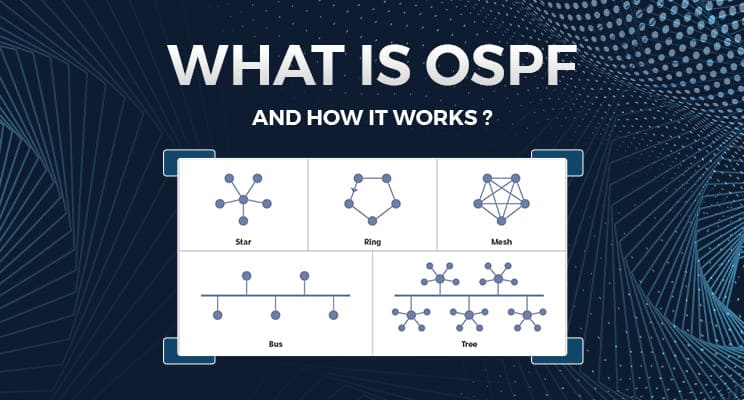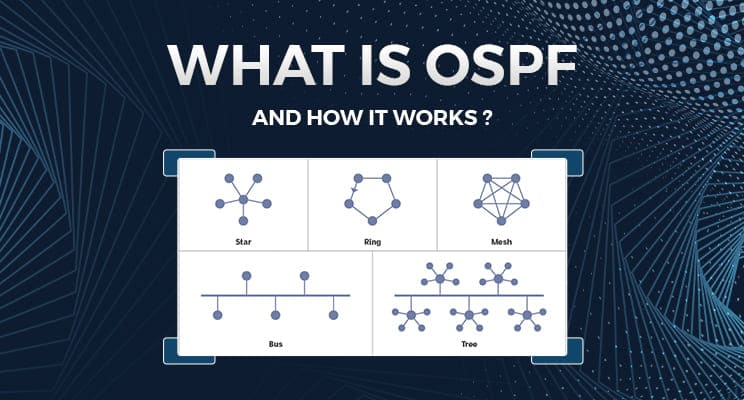How OSPF Protocol Builds Efficient Routing Tables in Large Networks

Strong 8k brings an ultra-HD IPTV experience to your living room and your pocket.
How OSPF Protocol Constructs Effective Routing Tables in Large Networks
It is no longer an option in today's enterprise IT environments to have slow and unreliable data transmission. For networks to work flawlessly, routers need to calculate the optimal path for each packet of data — and that is where the OSPF protocol plays a part. We at UniNets lay importance on learning fundamental networking protocols, including OSPF, and the role they play in effective routing tables in large networks.
This blog discusses how the OSPF full form, functionality, and dynamic design construct and preserve correct routing information, facilitating maximum communication in enterprise networks.
OSPF Full Form and Overview
Let us start with the fundamentals.
OSPF Full Form:
OSPF represents Open Shortest Path First.
It is a link-state routing protocol utilized inside an autonomous system (AS). OSPF belongs to the Interior Gateway Protocol (IGP) family, and it enables routers to communicate topology details and calculate the shortest path to every network.
At UniNets, we explain OSPF in detail as part of our routing and switching courses, utilizing simulation tools such as Cisco Packet Tracer and GNS3.
Why OSPF Is Ideal for Large Networks
In contrast to more basic protocols such as RIP (Routing Information Protocol), which is hop count-dependent, OSPF protocol employs Dijkstra's algorithm in calculating the shortest path as determined by cost. This cost is derived based on metrics including bandwidth, delay, and reliability.
OSPF key features:
Large enterprise network scalability
Convergence in a fast way upon network change
VLSM (Variable Length Subnet Masking) support
Hierarchical routing using areas in order to minimize complexity
How OSPF Constructs Routing Tables
A routing table is a collection of rules placed on a router that defines how packets are routed to their destinations. Below is how OSPF aids in constructing and updating optimal routing tables:
Link-State Advertisements (LSAs): All OSPF routers advertise the state of their links to other routers within the area.
Topology Database: The router accumulates LSAs to construct an entire view of the network.
Shortest Path Tree (SPT): The router builds a shortest path tree using Dijkstra's algorithm.
Routing Table Calculation: Based on the SPT, the router identifies the optimum route to each destination and enters it into the routing table.
This dynamic and intelligent approach keeps the routing table efficient, accurate, and responsive.
Why Should the Router Have an Accurate Routing Table?
A correct routing table is essential to make data reach its destination in the shortest possible time and securely. Here's why:
Reduces packet loss due to faulty or outdated routes
Enhances network performance by choosing the shortest path
Supports scalability with the addition of users, devices, and subnets
Ensures redundancy and load balancing with multiple paths
At UniNets, we educate students to check and debug routing tables through live CLI commands and hands-on labs.
OSPF vs DHCP: How They Work Together
While OSPF works on routing, DHCP (Dynamic Host Configuration Protocol) manages IP address assignment.
DHCP Full Form:
DHCP full form is Dynamic Host Configuration Protocol.
DHCP streamlines the process of attaching devices to a network by automatically allocating IP addresses, subnet masks, gateways, and DNS server data. After a device has an IP address (through DHCP), the router employs its routing table—usually constructed through OSPF—to direct packets to and from the device.
In combination, DHCP provides the address, and OSPF determines the best route.
Routing Table in Computer Networks: OSPF's Role
The computer network routing table serves as a guide for routers. Here is how OSPF improves it:
Dynamic Updates: OSPF dynamically updates routing tables when the network topology is modified.
Hierarchical Design: OSPF segments the network into areas, minimizing routing table size and improving performance.
Cost-Based Path Selection: OSPF doesn't merely tally hops—it measures cost based on bandwidth to ensure the path of least cost is chosen.
At UniNets, we illustrate how routing tables change in real-time with OSPF updates and link-state changes.
Bus Topology Diagram Visualizing Networks
For you to grasp routing, you also need to grasp network topologies. One of the basic designs in networking is a bus topology.
What is Bus Topology?
All devices are connected in a single central cable in a bus topology. Data moves along the cable until reaching its destination.
Bus Topology Diagram:
less
Copy
Edit
[PC1]---[PC2]---[PC3]---[Router]
|
Backbone Cable
It is a simple topology but with scalability and performance limitations. It is of more historical interest these days, but learning it provides a solid basis for more complicated topologies such as star, mesh, or hybrid.
Topologia Bus:
Topologia bus (literally, bus topology in Spanish) continues to be a popular term in global networking books and study guides. At UniNets, we make sure our students know technical nomenclature between languages for world certifications.
TCP vs. UDP: Function in OSPF and DHCP
OSPF and DHCP both use transport protocols to operate. Knowing the difference between TCP UDP is essential to understanding how these protocols work.
TCP (Transmission Control Protocol) is connection-oriented, reliable, and employed for applications such as HTTP, FTP, and email.
UDP (User Datagram Protocol) is connectionless, quicker, and employed in DNS, VoIP, and DHCP.
Protocol Usage in Networking:
DHCP employs UDP as it requires quick, connectionless communication.
OSPF does not use TCP or UDP; rather, it operates directly over IP via protocol number 89.
In UniNets, we teach these differences in lab experiments where students trace live packets with Wireshark and inspect protocol headers.
Conclusion
The OSPF protocol is the cornerstone of building quick, precise, and scalable routing tables for big networks. It automatically adjusts to network dynamics and ensures data travels in the most efficient way possible. When used in conjunction with DHCP, OSPF facilitates easy device connection and communication.
Knowing terminologies such as the full form of DHCP, how TCP and UDP are different from each other, and picturing the bus topology diagram makes it easier for professionals to understand the complete picture of contemporary network infrastructure.
We at UniNets equip students with practical experience, real-world examples, and internationally accepted certifications in order to gear them up for lucrative IT infrastructure careers.
Note: IndiBlogHub features both user-submitted and editorial content. We do not verify third-party contributions. Read our Disclaimer and Privacy Policyfor details.







